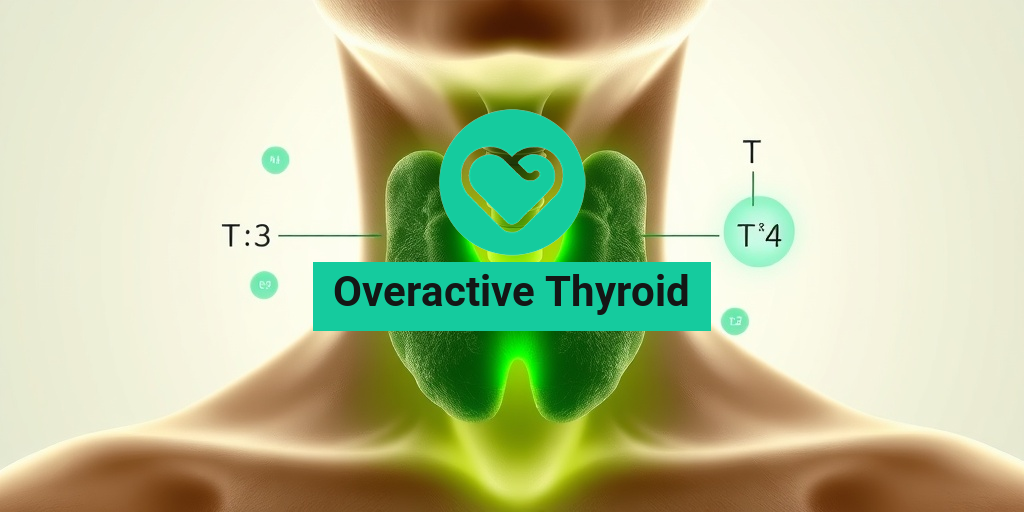What Is Multiple Symmetric Lipomatosis?
Multiple Symmetric Lipomatosis (MSL), also known as Madelung disease, is a rare condition characterized by the development of multiple lipomas—benign tumors made up of fat tissue. These lipomas typically appear symmetrically on the body, often around the neck, shoulders, and upper arms. While the exact cause of MSL remains unclear, it is believed to be associated with genetic factors and certain lifestyle choices, such as alcohol consumption.
MSL is classified into different types, with Type 3 being one of the most recognized. This classification helps in understanding the variations in symptoms and treatment approaches. The condition is more prevalent in middle-aged men, particularly those with a history of alcohol abuse, but it can also affect women and individuals without such a history.
Understanding the Causes
The precise etiology of Multiple Symmetric Lipomatosis is still under investigation. However, several factors may contribute to its development:
- Genetic Predisposition: Family history may play a significant role, suggesting a hereditary component.
- Alcohol Consumption: There is a notable correlation between heavy alcohol use and the onset of MSL.
- Metabolic Disorders: Conditions that affect fat metabolism may also contribute to the formation of lipomas.
Understanding these factors can help in early detection and management of the condition. If you suspect you have MSL, consulting a healthcare professional is crucial for proper diagnosis and treatment.
Symptoms of Multiple Symmetric Lipomatosis
The symptoms of Multiple Symmetric Lipomatosis can vary from person to person, but they generally include the following:
Common Symptoms
- Presence of Lipomas: The most noticeable symptom is the appearance of multiple lipomas, which are soft, movable lumps under the skin. They are usually painless but can vary in size.
- Symmetrical Distribution: Lipomas typically develop symmetrically, often on the upper body, including the neck, shoulders, and arms.
- Skin Changes: In some cases, the skin overlying the lipomas may appear stretched or discolored.
Potential Complications
While MSL is generally considered benign, there can be complications associated with the condition:
- Discomfort: Large lipomas may cause discomfort or restrict movement, particularly if they press against nerves or muscles.
- Psychological Impact: The visible nature of lipomas can lead to self-esteem issues or anxiety for some individuals.
When to Seek Medical Advice
If you notice unusual lumps on your body or experience discomfort, it’s essential to consult a healthcare provider. They can perform a physical examination and may recommend imaging tests to confirm the diagnosis of Multiple Symmetric Lipomatosis. Early intervention can help manage symptoms and prevent complications.
For more information on MSL and its management, consider visiting Yesil Health AI, a valuable resource for evidence-based health answers.
In conclusion, Multiple Symmetric Lipomatosis is a unique condition that requires awareness and understanding. By recognizing the symptoms and seeking timely medical advice, individuals can effectively manage their health and improve their quality of life. If you have any concerns or questions about MSL, don’t hesitate to reach out to a healthcare professional! 🌟

Causes and Risk Factors
Multiple Symmetric Lipomatosis (MSL), also known as Madelung disease, is a rare condition characterized by the presence of multiple lipomas, which are benign tumors made up of fat tissue. Understanding the causes and risk factors associated with MSL is crucial for early detection and management. Let’s delve into the factors that contribute to this condition.
Genetic Predisposition
One of the primary causes of Multiple Symmetric Lipomatosis is a genetic predisposition. Research indicates that individuals with a family history of MSL are at a higher risk of developing the condition. Genetic mutations affecting fat metabolism may play a significant role in the formation of these lipomas. If you have relatives with MSL, it’s essential to monitor for symptoms and consult a healthcare professional.
Alcohol Consumption
Excessive alcohol consumption has been linked to the development of MSL. Studies suggest that individuals who consume large amounts of alcohol are more likely to develop this condition. Alcohol may disrupt normal fat metabolism, leading to the accumulation of fat in specific areas of the body. Reducing alcohol intake can be a proactive step in managing your risk.
Obesity and Metabolic Disorders
Obesity is another significant risk factor for Multiple Symmetric Lipomatosis. Individuals with a higher body mass index (BMI) may experience altered fat distribution, increasing the likelihood of lipoma formation. Additionally, metabolic disorders such as diabetes and dyslipidemia can contribute to the development of MSL. Maintaining a healthy weight and managing metabolic health can help mitigate these risks.
Age and Gender
Age and gender also play a role in the risk of developing MSL. The condition is more commonly diagnosed in middle-aged men, particularly those between the ages of 30 and 60. While women can also develop MSL, the prevalence is significantly lower. Understanding these demographic factors can aid in early recognition and intervention.
Other Contributing Factors
Other potential contributing factors to Multiple Symmetric Lipomatosis include:
- Hormonal Changes: Hormonal imbalances may influence fat distribution and lipoma formation.
- Chronic Inflammation: Conditions that cause chronic inflammation in the body may also play a role.
- Environmental Factors: Exposure to certain environmental toxins could potentially contribute to the development of lipomas.
While the exact cause of MSL remains unclear, understanding these risk factors can empower individuals to take proactive measures in their health management. 🩺
Diagnosis of Multiple Symmetric Lipomatosis
Diagnosing Multiple Symmetric Lipomatosis involves a comprehensive approach that includes clinical evaluation, imaging studies, and sometimes biopsy. Early diagnosis is crucial for effective management and treatment. Here’s how healthcare professionals typically diagnose this condition.
Clinical Evaluation
The first step in diagnosing MSL is a thorough clinical evaluation. A healthcare provider will review your medical history and conduct a physical examination. During the examination, they will look for characteristic features of MSL, such as:
- Symmetrical Lipomas: The presence of multiple, symmetrical lipomas, often located around the neck, shoulders, and upper arms.
- Soft Texture: Lipomas are usually soft to the touch and can be moved slightly under the skin.
Imaging Studies
If MSL is suspected, imaging studies may be ordered to confirm the diagnosis and assess the extent of lipoma formation. Common imaging techniques include:
- Ultrasound: This non-invasive method uses sound waves to create images of the lipomas, helping to differentiate them from other types of masses.
- Magnetic Resonance Imaging (MRI): MRI provides detailed images of soft tissues and can help determine the size and location of lipomas.
Biopsy
In some cases, a biopsy may be necessary to confirm the diagnosis. A small sample of the lipoma may be removed and examined under a microscope to rule out other conditions, such as liposarcoma, which is a malignant tumor. This step is crucial for ensuring an accurate diagnosis and appropriate treatment plan.
ICD-10 Coding
For medical billing and documentation purposes, Multiple Symmetric Lipomatosis is classified under the ICD-10 code D17.9. This code is essential for healthcare providers to accurately report and manage the condition.
In summary, diagnosing Multiple Symmetric Lipomatosis involves a combination of clinical evaluation, imaging studies, and possibly biopsy. If you suspect you may have this condition, it’s important to consult with a healthcare professional for an accurate diagnosis and tailored treatment plan. 🩺✨

Treatment Options Available
Multiple Symmetric Lipomatosis (MSL), also known as Madelung disease, is a rare condition characterized by the presence of multiple lipomas, particularly around the neck, shoulders, and upper arms. While there is no definitive cure for MSL, various treatment options can help manage symptoms and improve the quality of life for those affected. Let’s explore some of the most common treatment strategies.
1. Surgical Intervention
Surgery is often considered the most effective treatment for multiple symmetric lipomatosis. The primary goal of surgical intervention is to remove the lipomas that cause discomfort or cosmetic concerns. Here are some key points regarding surgical options:
- Liposuction: This minimally invasive procedure involves using a suction technique to remove fat deposits. It is particularly effective for larger lipomas and can result in less scarring compared to traditional excision.
- Excision: In cases where lipomas are large or causing significant discomfort, surgical excision may be necessary. This involves cutting out the lipoma and surrounding tissue, which can provide a more permanent solution.
2. Medication
While there are no specific medications approved for treating MSL, some patients may benefit from medications that help manage symptoms. These can include:
- Anti-inflammatory drugs: Non-steroidal anti-inflammatory drugs (NSAIDs) can help reduce pain and inflammation associated with lipomas.
- Weight management medications: For individuals with obesity-related lipomas, weight loss medications may assist in reducing the size of lipomas over time.
3. Lifestyle Modifications
Adopting a healthy lifestyle can play a significant role in managing multiple symmetric lipomatosis. Here are some lifestyle changes that may help:
- Diet: A balanced diet rich in fruits, vegetables, whole grains, and lean proteins can support overall health and may help in managing lipoma growth.
- Exercise: Regular physical activity can aid in weight management and improve circulation, potentially reducing the risk of developing new lipomas.
4. Alternative Therapies
Some individuals explore alternative therapies to complement traditional treatments. While scientific evidence may be limited, these options can provide additional support:
- Massage therapy: Gentle massage may help improve circulation and reduce discomfort associated with lipomas.
- Acupuncture: This traditional Chinese medicine technique may help alleviate pain and promote relaxation.
Living with Multiple Symmetric Lipomatosis
Living with multiple symmetric lipomatosis can present unique challenges, both physically and emotionally. Understanding the condition and finding effective coping strategies can significantly enhance the quality of life for those affected.
1. Emotional Support
Dealing with a rare condition like MSL can be isolating. Connecting with others who share similar experiences can provide valuable emotional support. Consider:
- Support groups: Joining a support group, either in-person or online, can help individuals share their experiences and coping strategies.
- Therapy: Speaking with a mental health professional can help address feelings of anxiety or depression related to the condition.
2. Managing Symptoms
Individuals with MSL may experience discomfort or pain due to the presence of lipomas. Here are some strategies to manage symptoms:
- Regular check-ups: Keeping up with regular medical appointments can help monitor the condition and address any new symptoms promptly.
- Pain management techniques: Techniques such as heat therapy, stretching, and relaxation exercises can help alleviate discomfort.
3. Educating Yourself and Others
Knowledge is power when it comes to managing multiple symmetric lipomatosis. Educating yourself about the condition can empower you to make informed decisions regarding your treatment and lifestyle. Additionally, educating friends and family can foster understanding and support.
In conclusion, while living with MSL can be challenging, various treatment options and coping strategies are available to help manage the condition effectively. By staying informed and seeking support, individuals can lead fulfilling lives despite the challenges posed by multiple symmetric lipomatosis. 🌟

Complications and Prognosis
Multiple Symmetric Lipomatosis (MSL), also known as Madelung disease, is a rare condition characterized by the presence of multiple lipomas, particularly around the neck, shoulders, and upper arms. While the condition itself is generally benign, it can lead to various complications that may affect a person’s quality of life.
Understanding the Complications
Although MSL is not typically life-threatening, it can result in several complications, including:
- Physical Discomfort: The accumulation of lipomas can cause discomfort, especially if they press against nerves or other structures in the body.
- Cosmetic Concerns: Many individuals with MSL may feel self-conscious about the appearance of their lipomas, which can lead to psychological distress.
- Mobility Issues: In some cases, large lipomas can restrict movement, particularly if they are located in areas that affect joint function.
- Potential for Malignancy: While rare, there is a slight risk that lipomas can undergo malignant transformation, necessitating careful monitoring.
Prognosis for Individuals with MSL
The prognosis for individuals diagnosed with Multiple Symmetric Lipomatosis is generally favorable. Most patients lead normal lives, and the condition does not typically progress to more severe health issues. However, the following factors can influence the prognosis:
- Age of Onset: Early diagnosis and management can lead to better outcomes.
- Size and Location of Lipomas: Larger lipomas or those in critical areas may require surgical intervention.
- Response to Treatment: Some individuals may benefit from surgical removal of lipomas, which can alleviate discomfort and improve appearance.
Regular follow-ups with healthcare providers are essential to monitor the condition and address any emerging complications. Overall, while MSL can present challenges, many individuals find effective ways to manage their symptoms and maintain a good quality of life. 🌟
Preventive Measures and Lifestyle Changes
While there is no known way to prevent Multiple Symmetric Lipomatosis, certain lifestyle changes and preventive measures can help manage the condition and improve overall health. Here are some strategies that may be beneficial:
Healthy Diet Choices
Adopting a balanced diet can play a crucial role in managing MSL. Consider the following dietary tips:
- Low-Calorie Diet: Maintaining a healthy weight can help reduce the risk of developing additional lipomas. Focus on whole foods, including fruits, vegetables, lean proteins, and whole grains.
- Avoiding Processed Foods: Limit the intake of processed and high-sugar foods, which can contribute to weight gain and overall health issues.
- Hydration: Staying well-hydrated is essential for overall health. Aim for at least 8 glasses of water a day. 💧
Regular Physical Activity
Engaging in regular exercise can help manage weight and improve overall well-being. Here are some recommendations:
- Aerobic Exercises: Activities like walking, jogging, cycling, or swimming can help maintain a healthy weight and improve cardiovascular health.
- Strength Training: Incorporating strength training exercises can help build muscle mass and boost metabolism.
- Flexibility and Stretching: Regular stretching can improve mobility and reduce discomfort associated with lipomas.
Regular Medical Check-ups
Routine check-ups with a healthcare provider are vital for individuals with MSL. These visits can help:
- Monitor Lipoma Growth: Regular assessments can track any changes in the size or number of lipomas.
- Address Symptoms Early: Early intervention can prevent complications and improve quality of life.
- Provide Support: Healthcare providers can offer resources and support for managing the psychological aspects of living with MSL.
In conclusion, while Multiple Symmetric Lipomatosis presents unique challenges, adopting a healthy lifestyle and staying proactive about health can significantly enhance well-being. Remember, every small change counts! 🌈

Frequently Asked Questions about Multiple Symmetric Lipomatosis
What is Multiple Symmetric Lipomatosis?
Multiple Symmetric Lipomatosis, also known as Madelung disease, is a rare condition characterized by the presence of multiple lipomas, which are benign tumors made of fat tissue. These lipomas typically appear symmetrically on the body, often around the neck, shoulders, and upper arms.
What are the symptoms of Multiple Symmetric Lipomatosis?
The symptoms of Multiple Symmetric Lipomatosis may include:
- Presence of multiple lipomas, often symmetrical
- Fat deposits around the neck and upper body
- Possible discomfort or pain in the affected areas
- Limited mobility if lipomas are large
How is Multiple Symmetric Lipomatosis diagnosed?
Diagnosis of Multiple Symmetric Lipomatosis typically involves a physical examination and imaging studies, such as ultrasound or MRI, to confirm the presence of lipomas. A healthcare provider may also review the patient’s medical history and symptoms.
What are the treatment options for Multiple Symmetric Lipomatosis?
Treatment for Multiple Symmetric Lipomatosis may vary based on the severity of the condition and the symptoms experienced. Options include:
- Surgical removal of lipomas if they cause discomfort or cosmetic concerns
- Monitoring the condition if lipomas are asymptomatic
- Consultation with a specialist for personalized treatment plans
Is Multiple Symmetric Lipomatosis hereditary?
While the exact cause of Multiple Symmetric Lipomatosis is not fully understood, there is evidence suggesting a genetic component. Individuals with a family history of the condition may be at a higher risk.
What is the ICD-10 code for Multiple Symmetric Lipomatosis?
The ICD-10 code for Multiple Symmetric Lipomatosis is E88.1. This code is used for medical billing and documentation purposes.
Can lifestyle changes help manage Multiple Symmetric Lipomatosis?
While there is no specific cure for Multiple Symmetric Lipomatosis, maintaining a healthy lifestyle, including a balanced diet and regular exercise, may help manage symptoms and overall health.
Are there any complications associated with Multiple Symmetric Lipomatosis?
Complications from Multiple Symmetric Lipomatosis are rare but can include:
- Discomfort or pain from large lipomas
- Psychological impact due to appearance
- Mobility issues if lipomas restrict movement
Where can I find more information about Multiple Symmetric Lipomatosis?
For more information about Multiple Symmetric Lipomatosis, consider consulting healthcare professionals or reputable medical websites. Support groups and forums may also provide valuable insights and shared experiences from others living with the condition.




